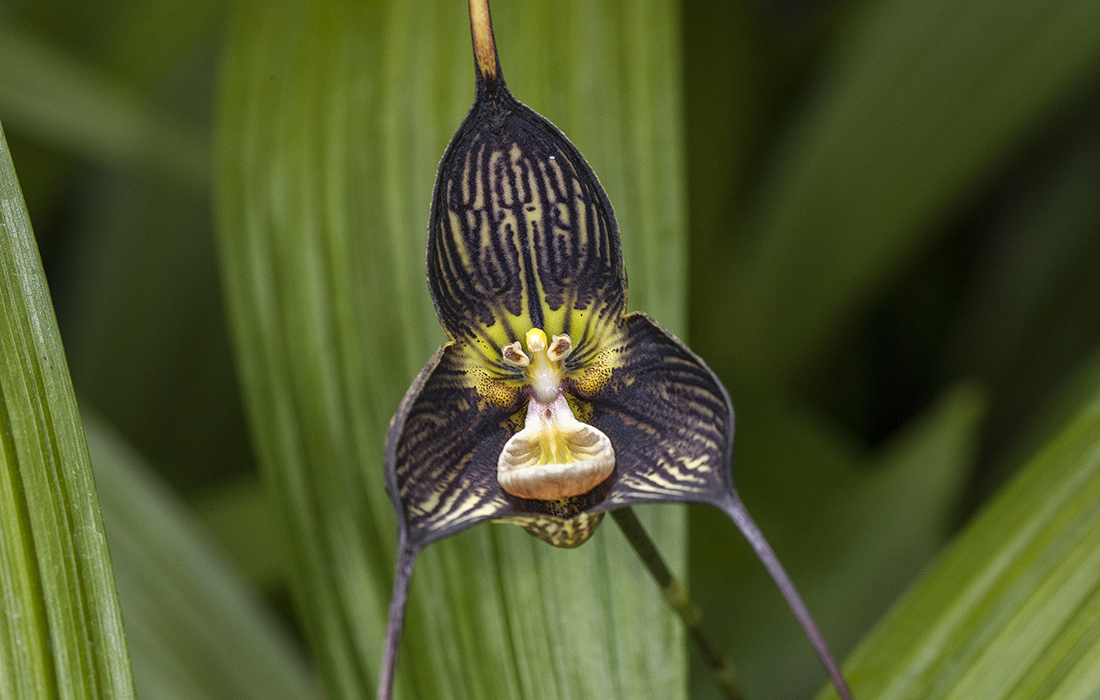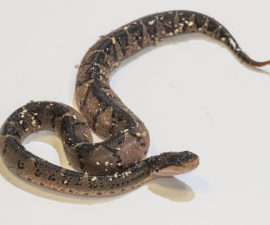BY Peggy Scott
Photography by Ken Bohn
While it may be true that “a rose is a rose is a rose,” the same cannot be said about the enigmatic orchid. With this intriguing epiphyte, all is often not as it seems. Long admired for its elegant, exotic beauty, the orchid has also been a bit type cast, with many people considering it best suited to corsages and floral arrangments for anniversaries and Mother’s Day. There are stunning orchid varieties out there with the classical appeal to fit that bill. There are also, however, thousands of other species that would make wonderful “character actors” rather than the stars of the show. And, just as with thespians, the more unusual-looking specimens can turn out to be quite fascinating.
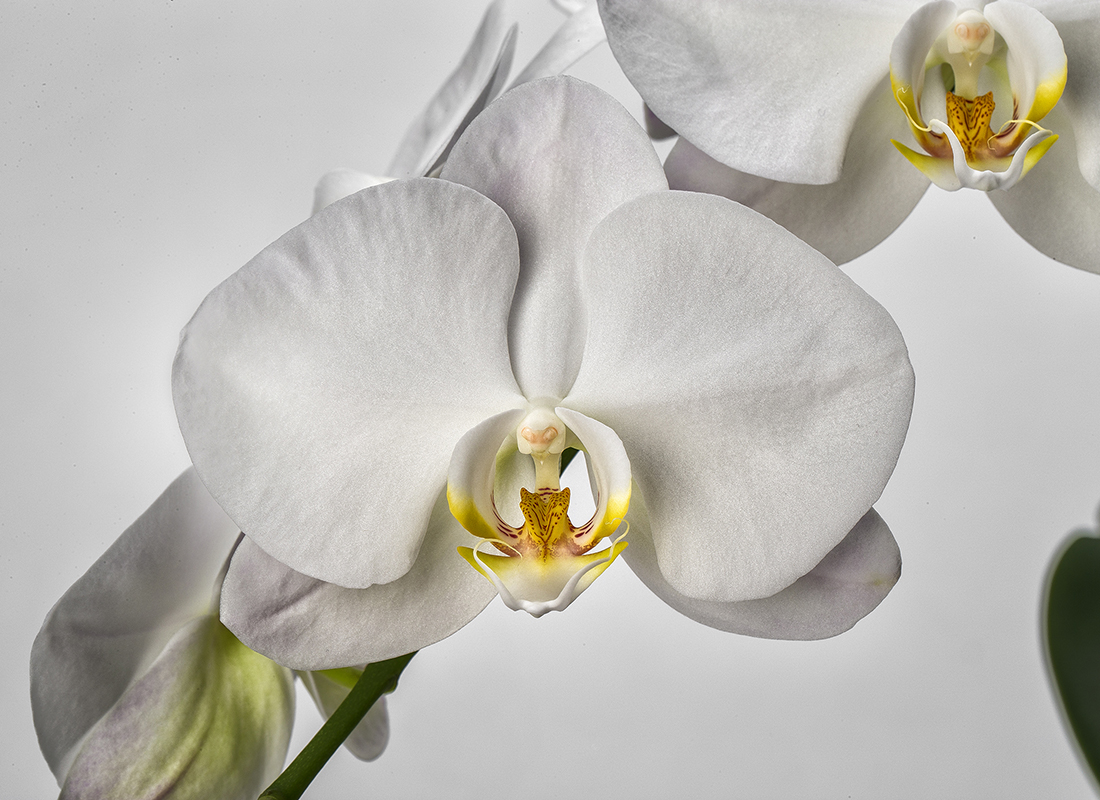
LOOK FAMILIAR?
This Phalaenopsis hybrid is an example of the typical orchids commonly found in floral arrangements, the ones that most people are used to seeing—definitely pretty, but not one of the extraordinary species found in the Zoo’s collection.
A Bounty of Blooms and Beliefs
Orchids belong to the largest flowering plant family, with an estimated 35,000 different types in the wild, plus more than 45,000 hybrids—and more being discovered all the time. They grow in several ways: anchoring themselves to trees to receive the light, air, and moisture they need, growing in or on rocks, or growing in the ground, underground, or in water. Despite their varied good looks, orchid flowers have the same basic structure: three outer sepals, two inner petals, and one central column. The column is formed by the fusion of the plant’s male and female sexual organs, a structure that is unique to the orchid family.
The aerial roots, leaf structure and type, and growth habit are all contributing factors in identifying orchids. While orchids get considerable attention for their appearance, they can also be an olfactory experience, since approximately 25 percent of them are fragrant. Some of the scents are readily picked up by people, while the aroma of others can only be detected by the pollinators for those plants. Orchids pop up in many forms and serve many purposes. For example, the vanilla that we love in ice cream, extracts, and fragrances comes from an orchid plant. The vanilla bean is the pollinated seed pod of Vanilla planifolia, the only “orchid of commerce.”
With such a number of varieties, it should come as no surprise that a wide range of meanings and interpretations have been bestowed upon the orchid. The ancient Greeks associated the blossoms with virility, and the Aztecs believed that drinking a mixture of vanilla and chocolate would give them power and strength. Today, orchids are often a symbol of love, beauty, and even luxury. After taking a look at some of the more unusual orchid species, you can add extraordinary: you may never have seen some of them, but chances are you won’t be able to forget them.
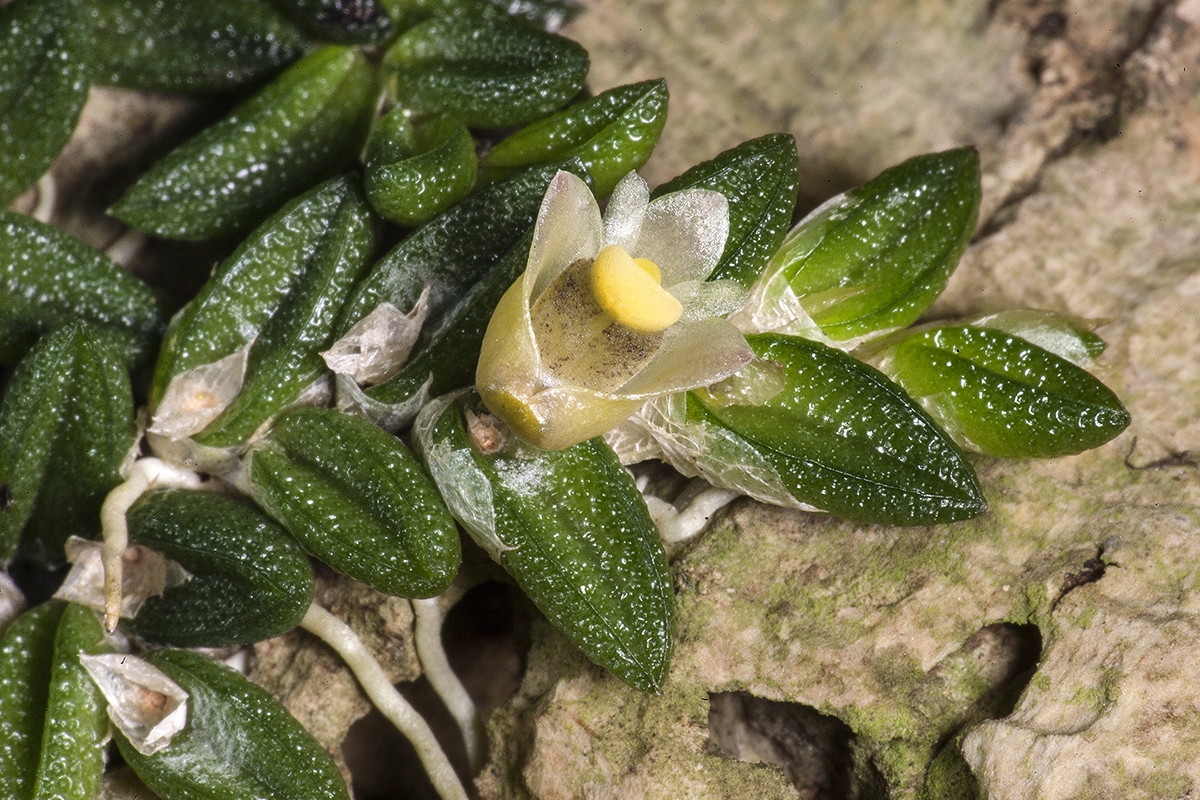
TINY BUT MIGHTY
The grain-of-wheat orchid hails from Queensland, Australia.
GRAIN-OF-WHEAT ORCHID Bulbophyllum minutissimum
The grain-of-wheat orchid from Queensland, Australia, is a true miniature plant with tiny leaves and equally miniscule green-yellow flowers. This species can grow over a slab of cork or tree fern to form a nice clump. Each leaf is about the size and shape of a grain of wheat, hence the common name. The single flower arises from the base of the leaf with virtually no peduncle (basal stalk) and can appear any time of year.
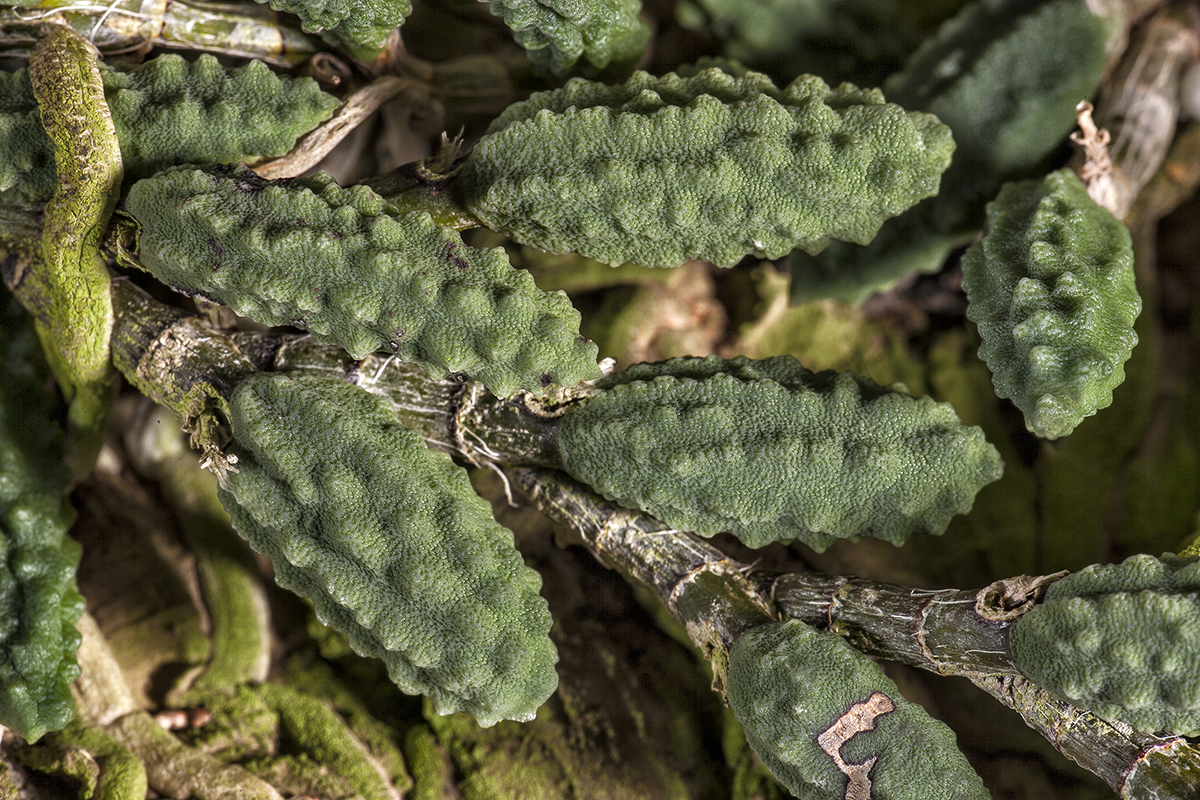
IN A PICKLE
The gherkin orchid is remarkable to look at but not so pleasant to smell.
GHERKIN ORCHID Dendrobium cucumerinum
As remarkable as the gherkin, or cucumber, orchid is, if you’re looking for a nice fragrance, your nose may wind up out of joint. This cool-looking but foul-smelling Australian species hails from southeast Queensland through central eastern New South Wales, where it is most commonly found growing on river oaks. Plants may form large, dense clumps or strands. Blooming in the late spring through summer, this orchid usually yields 2 to 10 flowers no bigger than an inch across that are cream to greenish white with purple striping.
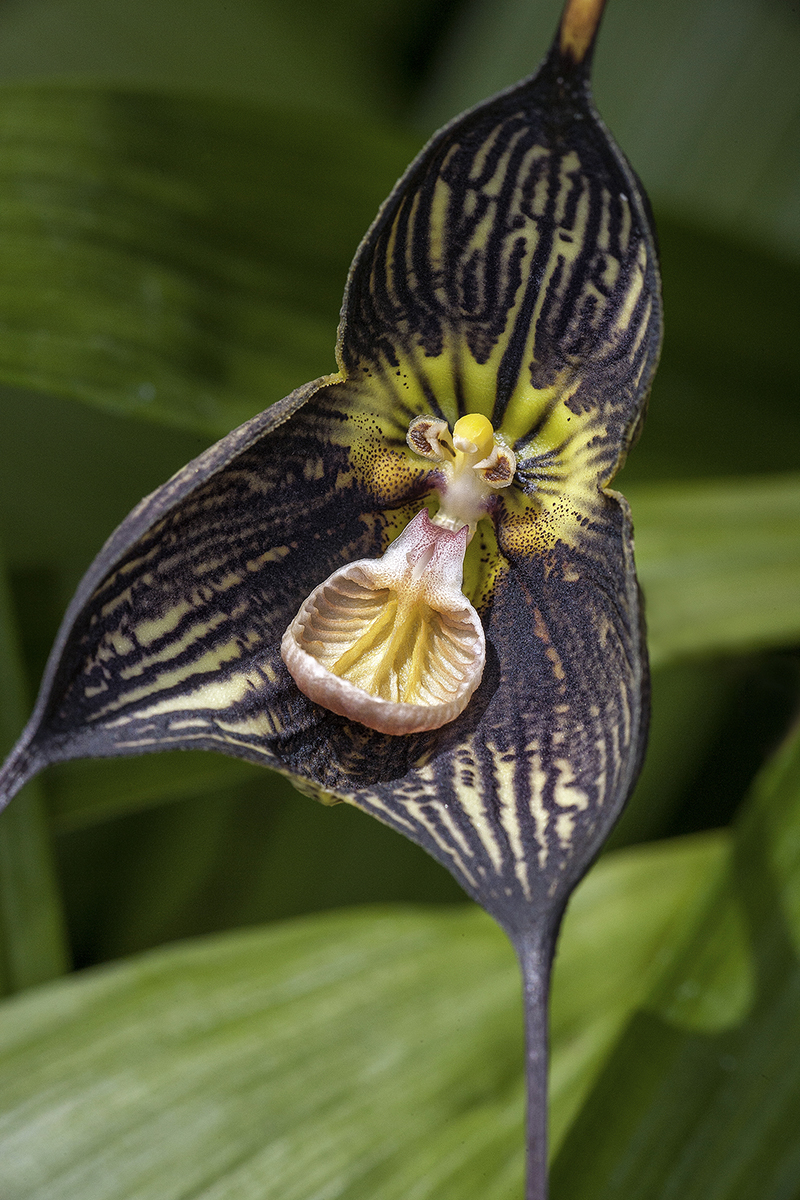
SO INTERESTING, IT’S SCARY!
The vampire orchid doesn’t bite, but you may find yourself mesmerized by its exotic allure.
Vampire Orchid Dracula vampira
Here’s a species you can sink your teeth into! This magnificent orchid blooms with up to six flowers, which open in succession at any time of the year and measure over three inches wide. Found in the cloud forests of western Ecuador and Colombia, the distinctive vampire orchid’s sepals are rounded with the top corner pulled into a thin tail, which may grow to more than four inches long.
Although green, the sepals are covered by numerous blackish purple veins, and the tails are almost completely black. The large sepals dwarf the petals and lip of the flower, which are white and marked with purple and pinkish veins respectively.
Where does this plant’s ghoulish common name come from? Dracula means little dragon, which may refer to the exotic flower shape. Or perhaps the misty cloud forest where these orchids are found is reminiscent of Count Dracula and dark environments. Like the infamous vampire, this orchid shuns sunlight!
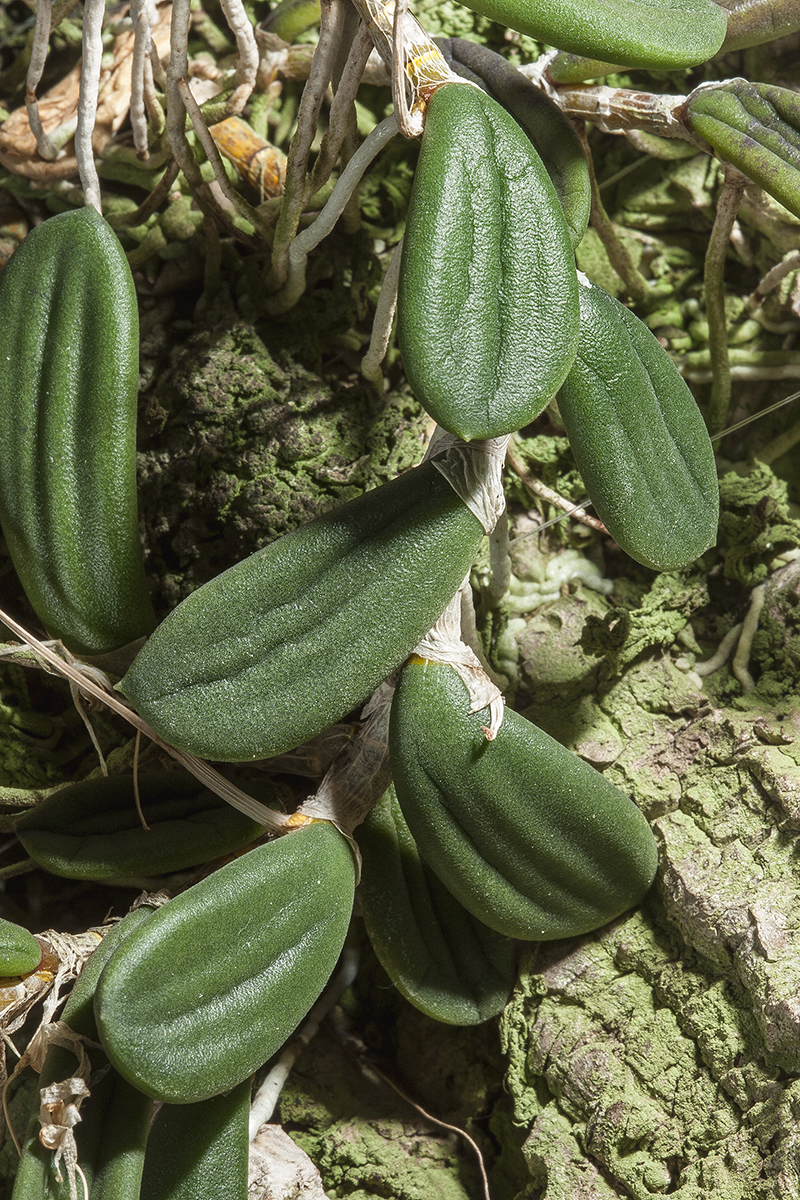
IT TAKES A LICKING
Blooming in the fall and winter, the tongue orchid produces 15 to 20 fragrant blossoms.
TONGUE ORCHID Dockrillia linguiformis
Its flower size is less than one inch, but one look at the leaves and it’s easy to see how the tongue orchid got its common name. Growing north from Ulladulla in southeastern New South Wales, Australia, the tongue orchid favors warm climates with damp, bright conditions. It blooms in the fall and winter, producing 15 to 20 fragrant blossoms. Leaves are fleshy, dark green, and usually furrowed.
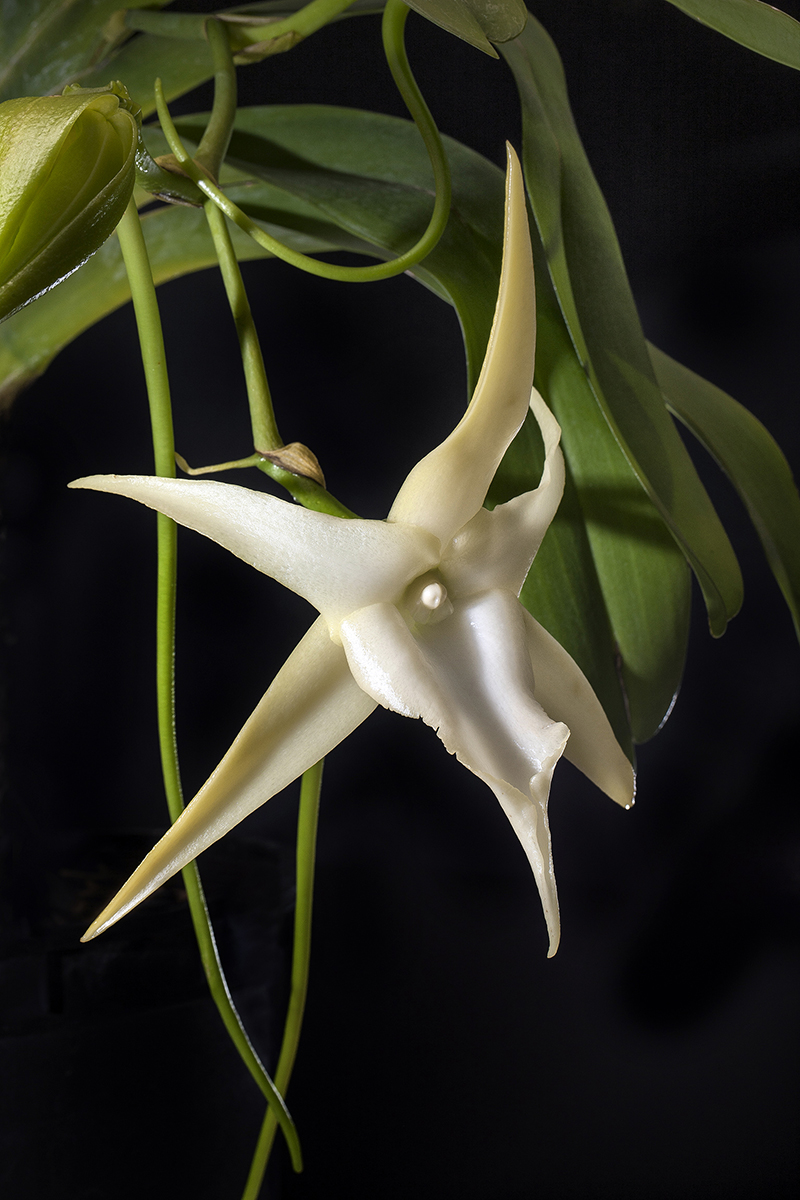
SEEING STARS—AND MORE
The spicy-scented Angraecum sesquipedale has several common names, including Christmas orchid and Star of Bethlehem orchid.
Angraecum sesquipedale
In its native Madagascar, this plant’s star-shaped, waxy flowers grow on 12-inch stems from June to September, with most flowers wilting by August. But when grown elsewhere, the plant, which can be over three feet tall, blossoms between December and January. The timing probably led to several of its common names, which include Christmas orchid and Star of Bethlehem orchid. Another common name, comet orchid, probably refers to the shape of its flower.
The flowers open up green in color but eventually turn white with tones of light green. The amount of green in each flower can vary from plant to plant. This orchid’s scent is intensely spicy and has been found to contain 39 different chemical components.
This unique species’ characteristics have attracted attention for many years. Its long nectar tube is tricky for most pollinators to navigate. Charles Darwin, who first described the species, believed that its pollinator would be a moth with a 12-inch tongue. Some scientists scoffed at the idea, but Darwin was later proved correct when a very large hawk moth Xanthropan morgani—and its long tongue—was discovered.
Orchid Overview
If you find these examples intriguing, pay a visit to the Orchid House at the San Diego Zoo, open to visitors on the third Friday of every month. Even when they’re not in bloom, orchids are a sight to see! Take time to stop and observe orchids—the roses won’t mind sharing the attention.

